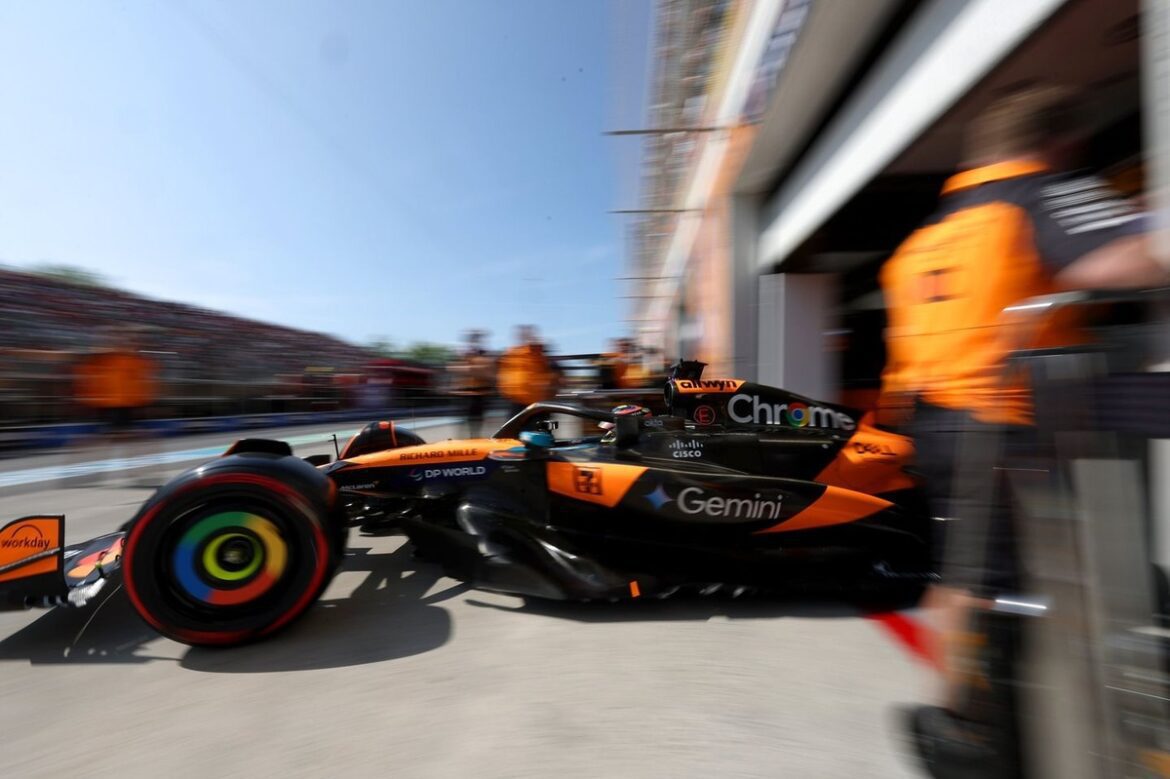McLaren’s Front Suspension Update for the Canadian Grand Prix: Insights from the Team
As the Canadian Grand Prix approached, McLaren made notable adjustments to their Formula 1 car, particularly concerning the front suspension. This update, though seemingly minor, aimed to enhance driver feedback and performance perception, an aspect that has been a point of discussion among the team members and fans alike.
Understanding the Suspension Changes
McLaren introduced three updates for their car during the Canadian Grand Prix weekend, one of which focused on the front suspension. This modification included subtle geometric changes that were utilized during the early part of the 2025 season. The decision to test this new package was based on feedback that the MCL39, the car model in question, often felt "numb" to some drivers, a sentiment echoed by team principal Andrea Stella. The goal was to provide the drivers with improved feedback from the car, allowing for a more connected driving experience.
Driver Choices: Norris and Piastri
During practice sessions, Lando Norris chose to adopt the new suspension setup for qualifying, while Oscar Piastri, the championship leader at that time, opted to stick with the traditional specification that had served him well throughout the season. This decision sparked conversations around individual driver preferences and how they can influence performance.
Stella explained that the differences in the suspension were so subtle that it would be challenging for the drivers to discern their impact without a direct back-to-back comparison, which is often impractical during a race weekend. For Norris, the new setup did not present any drawbacks, and he felt competitive throughout the weekend, although he faced challenges in Q3.
Performance Insights and Feedback
While discussing the modifications, Stella emphasized that the changes were not intended to dramatically alter the car’s performance. Instead, they aimed to enhance how drivers perceive the car’s behavior through the steering and suspension. He noted that both drivers were encouraged to explore this new configuration, which could potentially align better with their individual driving styles.
Norris, after qualifying, confirmed that while the new suspension did not necessarily lead to enhanced performance, it allowed him to feel more confident on the track, although he encountered a mishap with a wall during his final qualifying lap. This incident highlighted the fine line drivers walk between pushing for speed and maintaining control.
Piastri’s Perspective on Consistency
Piastri provided insight into his decision to forego the new suspension package. He expressed a desire for consistency in his car setup, especially after facing difficulties during practice. His approach reflects a broader strategy among drivers to balance innovation with the need for reliability. After encountering issues, including hitting the Turn 14 exit wall, Piastri felt that sticking with a familiar configuration was the best path forward.
He clarified that while he had the option to use the new suspension, he opted against it, believing that it was not simply an upgrade but rather a different component that could introduce variability into his performance. Piastri’s focus on consistency over experimentation underscores the risks drivers face during high-stakes qualifying sessions.
The Role of Driver Preferences in Car Setup
Stella elaborated on how driver preferences play a significant role in the setup of the car. Each driver has unique requirements and feelings regarding how the car responds, which can lead to different configurations even when the overall vehicle specification remains the same. This personalized approach to setup allows drivers to maximize their comfort and performance, catering to their individual driving styles.
He mentioned that while the suspension changes were minor, they could lead to significant differences in how a driver perceives the car’s handling. This nuanced understanding of driver feedback is crucial in Formula 1, where every millisecond counts.
Minor Adjustments with Major Implications
The discussion surrounding the suspension changes serves as a reminder of how seemingly minor adjustments can have far-reaching implications in the high-performance world of Formula 1. The ability to tailor car setups to individual driver preferences can significantly impact performance, especially in a competitive environment where every advantage is critical.
Stella reassured that the adjustments made to the suspension were not politically motivated or reflective of any internal team dynamics. Instead, they were simply variations designed to enhance driver experience and performance. This transparency is vital in fostering trust among team members and ensuring that all drivers feel supported in their pursuit of success.
Conclusion
In the fast-paced arena of Formula 1, updates and adjustments are commonplace as teams strive to improve their cars and enhance driver performance. McLaren’s front suspension update during the Canadian Grand Prix exemplifies this ongoing quest for optimization. While the changes may have seemed minor, the implications for driver feedback and performance perception are significant.
As drivers like Lando Norris and Oscar Piastri navigate the complexities of racing, their individual preferences and choices regarding car setup will continue to shape the strategies employed by the McLaren team. The balance between innovation and consistency is crucial in the world of Formula 1, and understanding the nuances of each driver’s experience will remain a priority as the season unfolds.
